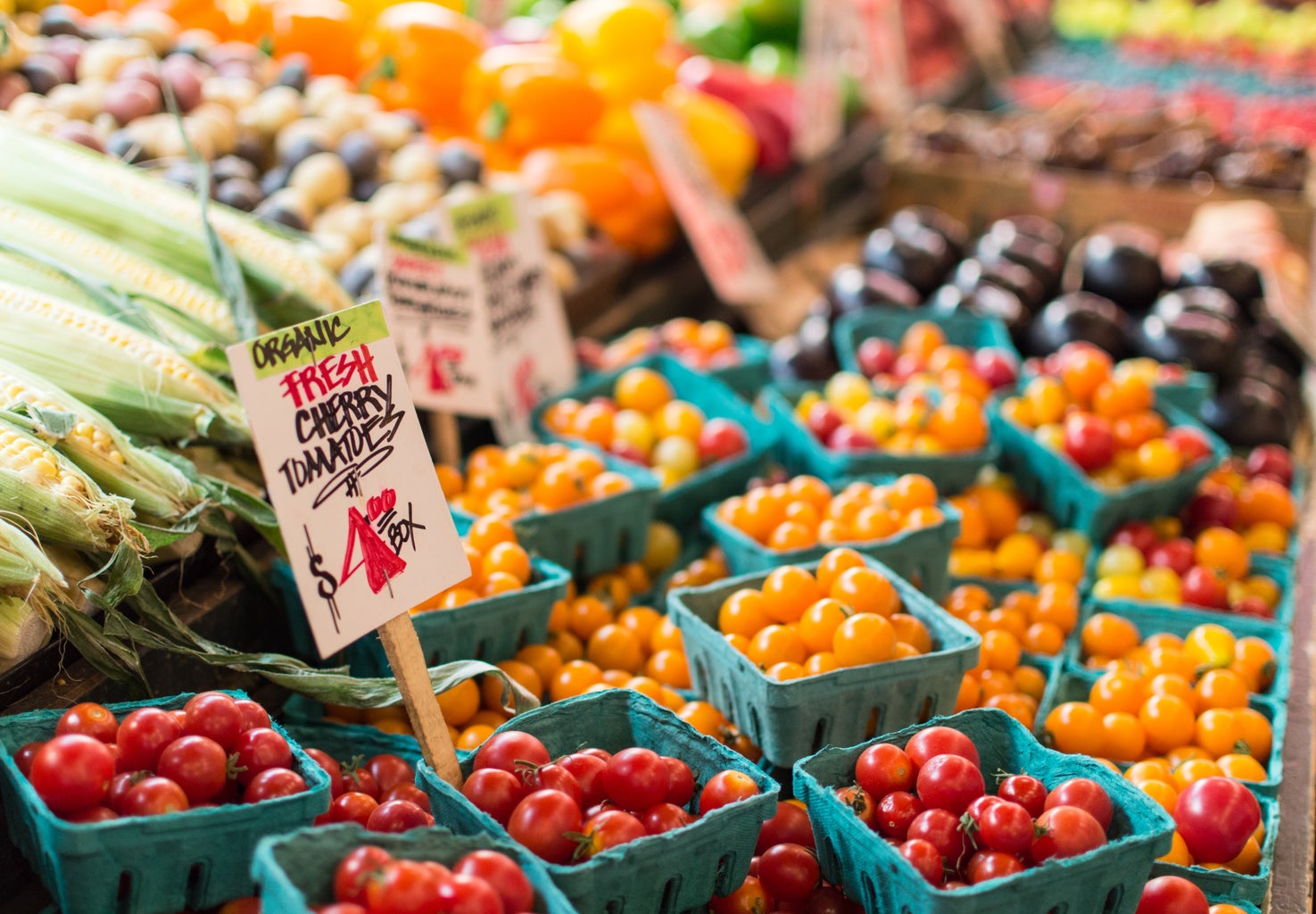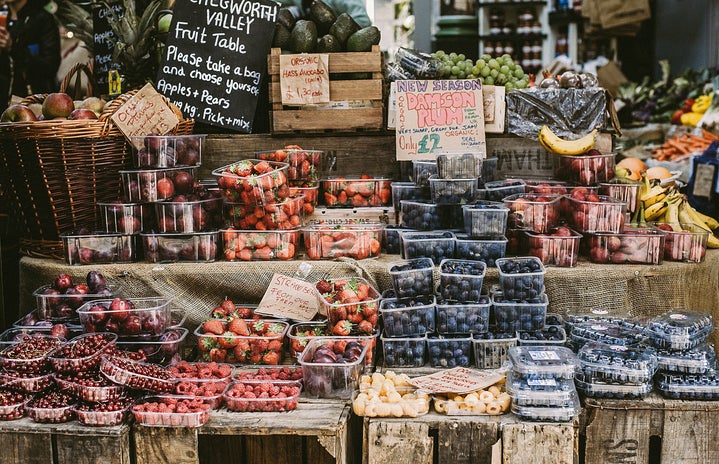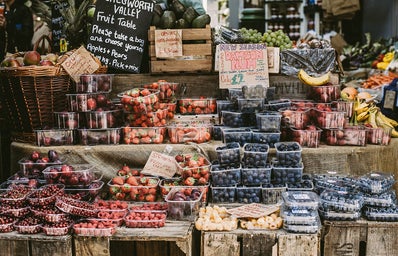With Thanksgiving right around the corner, early November is the time when many start making plans for holiday meals and gatherings. One very important -and often celebrated aspect – of the autumn months is the wide range of delicious seasonal produce available. Cooking and preparing meals with fruits and vegetables that are currently in-season not only makes for a colorful meal, but also happens to be climate-conscious and sustainable.

Fruits:
- Apples
- Dates
- Persimmons
- Pears
- Pomegranate
- Grapefruit
Vegetables:
- Collard greens / chard
- Kale
- Broccoli
- Cauliflower
- Cabbage
- Brussels sprouts
- Eggplant
- Fennel
- Snap peas
- Winter squash
- Pumpkin
One of the easiest ways to purchase seasonal produce is to visit your local farmer’s market. Shopping for groceries at farmers’ markets removes the intermediary (i.e. the grocery store) from the shopping process, as you are able to buy directly from the farmers themselves. This allows you to connect directly with – and learn more about – the source of your food. The Davis Farmer’s Market has repeatedly been voted one of the best in America, and stopping there to check out the vendors is a great option for buying locally sourced, quality products. Farmers’ markets aren’t the only place you can find local produce, however, as many grocery stores also sell locally grown products. Keep an eye out for labels identifying local produce.

Another con to off-season produce is that, depending on the environment, these crops typically need pesticides and/or preservatives to grow outside of their natural crop cycle. Runoff from chemicals used in this process has the potential to negatively impact or harm the environment. While buying off-season produce is not always bad, you avoid these problems when buying in-season instead. In addition, both seasonal and local foods often carry more nutrients than other foods that had to travel hundreds or thousands of miles to reach your destination. Therefore, shopping locally also provides you with additional health benefits!
It is worth mentioning that shopping locally also goes hand-in-hand with shopping seasonally, and this, in turn, provides you with the possibility of supporting your community and local economy. Paying more attention to buying seasonal products reduces costs and carbon emissions. Additionally, shopping seasonally provides you with the opportunity to learn more about currently growing foods and discover new recipes to cook in-season. So, taking the above list of seasonal foods into consideration when planning your Thanksgiving other holiday meals allows you to give back to yourself, your community, and your planet.



